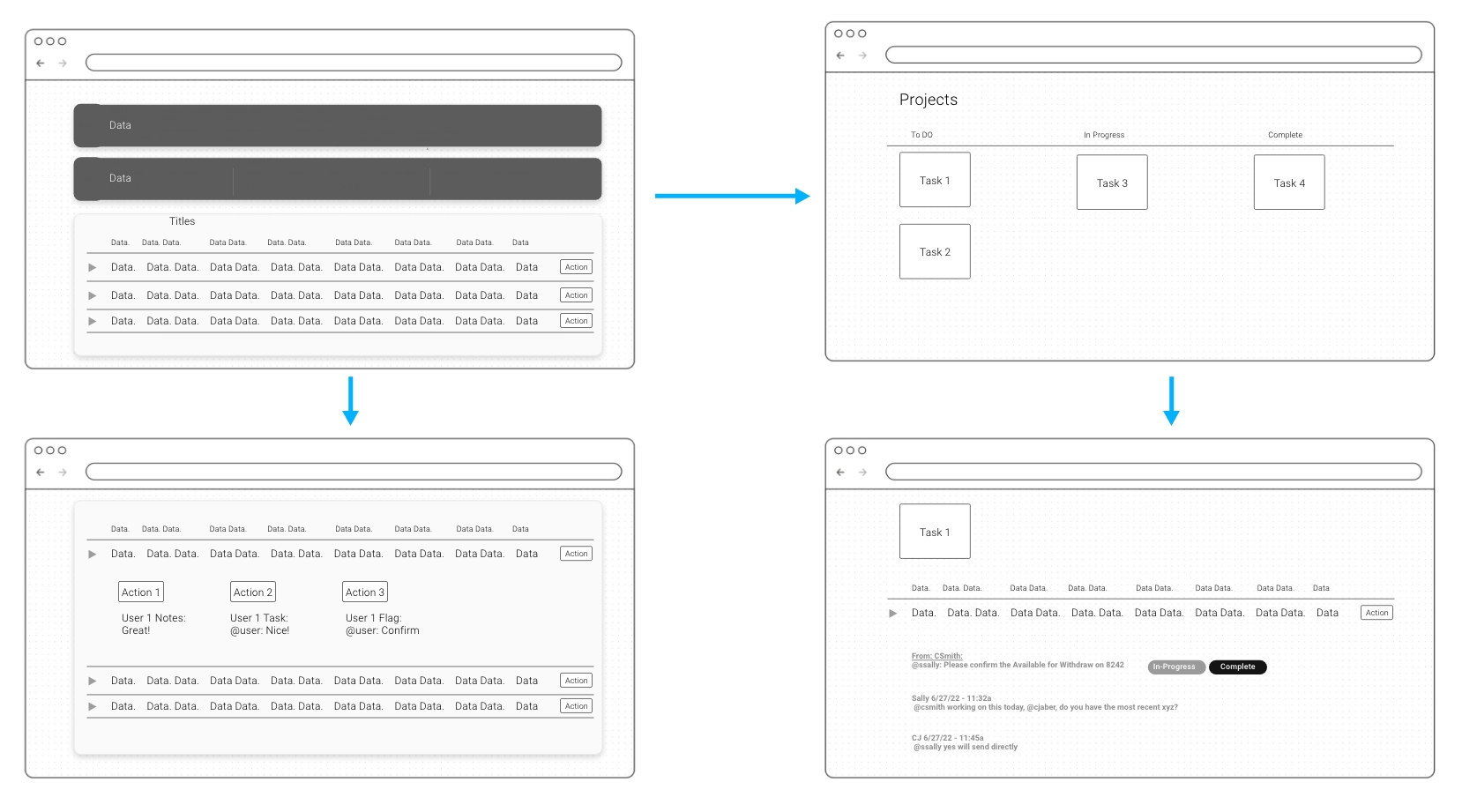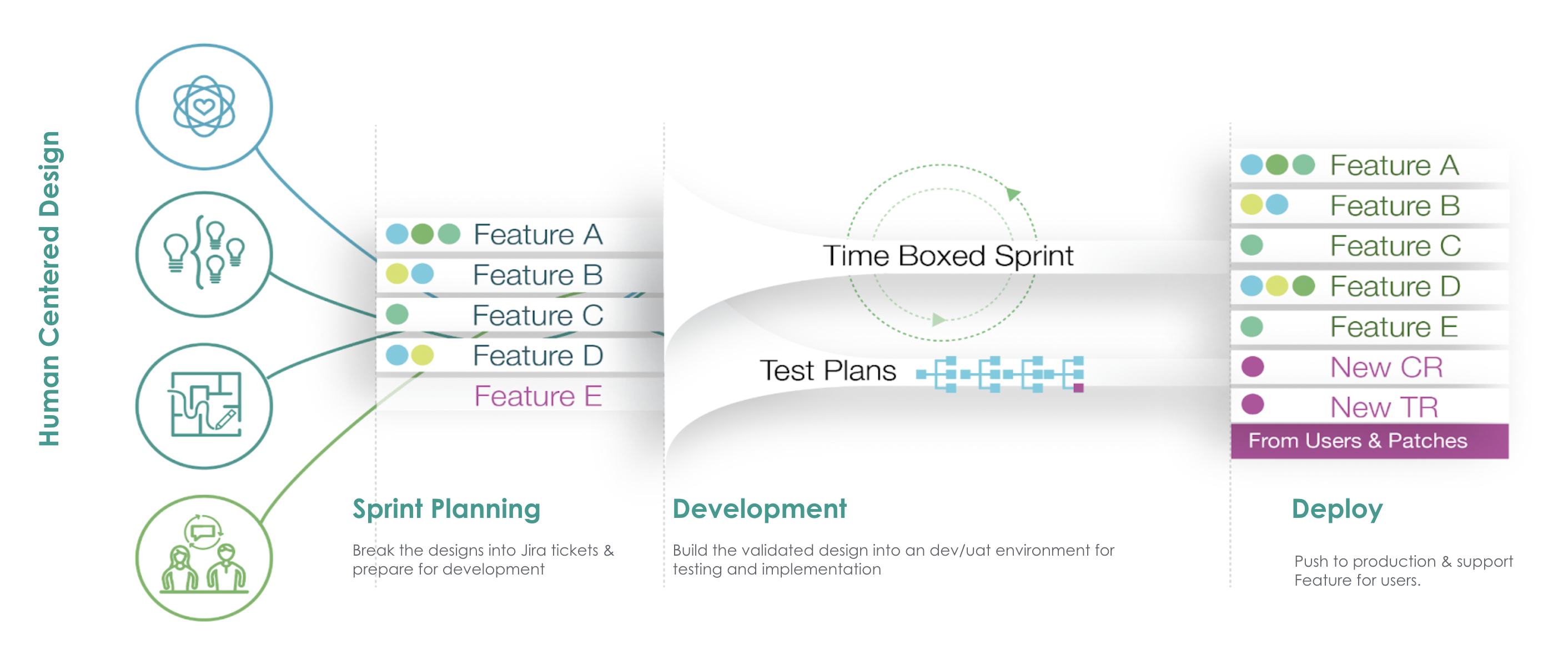Catherine Forsyth
Project Control Analyst
SpinSys

Understanding Phase
There are three steps to the Understanding Phase: Persona and Use Cases, Journey Mapping, and Problem Statement. Understanding the user is crucial to the design, and none of these steps can be skipped or shortened without detriment to the design.
Persona and Use Cases
While building the Personas and Use Cases for each Persona, the designer conducts stakeholder and user interviews. These are crucial to determine the main personas, or user roles, that are expected to interact with the UI. Designers develop an “average†individual within each persona and use them to develop use cases for each persona. It is crucial that the designer takes the time to explore how the personas will access the product, the motivations behind the use of the product, and writing out step-by-step how the persona will use the product in the course of their work. See Figure 1 for examples of Personas and their corresponding Use Cases.
Figure 1: Personas and their corresponding Use Cases
Journey Maps & Impact/Effort Matrix
The second step in the Understanding Phase is the Journey Map, which is based on the user’s journey through the UI. First, the designer will determine the actions that a user will take within the product. In each action, human-centered designers will develop a task list, consider and describe the main feeling that the user will be experiencing in that step, and then determine needed improvements or opportunities to the UI that enhances or improves the user’s experience. Â
Problem Statement
After the Journey Mapping is complete, the designer will use the map to build the user’s problem statement for the UI. Depending on the map, the problem statement may be simple or complex. It will need to be clear and concise over the goals and scope of the UI, as it is the guide for the rest of the human-centered design phases. The designer then presents the problem statement to the stakeholders to elicit feedback to ensure that it meets their expectations as well.
Ideation Phase
The Ideation Phase is where the problem statement developed in the understanding phase is transformed into an interface design. The UI designer will sketch their low-fidelity design ideas using wireframes; see Figure 2. The wireframe design helps the stakeholders visualize, test, and provide feedback to the design of the UI. The designer will continue to adjust the wireframes until the design solution is validated based on the problem statement. Â
Figure 2: Low Fidelity Design using Wireframes
High Fidelity Prototyping Phase
After the designer finishes the Ideation Phase, they develop a high-fidelity prototype. These pixel-perfect prototypes show exactly how a developed product will look and function.Â
Testing Phase
The Testing Phase is where stakeholders, users, and designers work together to test and revise the high-fidelity prototypes to validate the problem statement. Â
Development Phase
The final phase is the Development Phase. The designer provides the finalized prototype to the development team toward the end of Sprint Zero. Figure 3 below shows the major steps in development: Sprint Planning, Development, and Deploy.
Figure 3: Integrating Human Centered Design into Development
During Sprint Planning, the development team and the designer work to break the design into buildable pieces divided by epics, stories, and tasks. Designers and developers continue to reference the problem statement and maintain a user focus during the Development step. Each sprint ends with a demonstration review to the stakeholders of built functionality. These reviews provide the feedback loop necessary to maintain an agile approach. After stakeholders have approved the sprint, the team will enter the Deploy step and push the new features to production.  Â
Human Centered Design is a process that companies should use to build software that is valuable to the end user. If designers that take the time to empathize and understand the end user’s perspectives and use those perspectives as the keystone of their design, they can easily and quickly meet stakeholder needs for the product. This, in turn, saves development resources which protects a project’s budgets and timelines.








